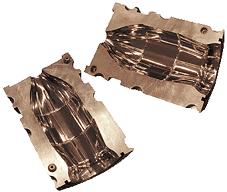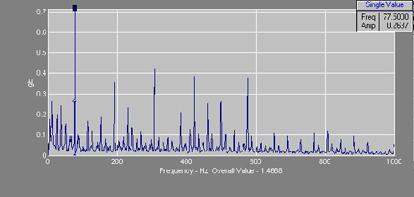.jpg)
Specialty Machine
DEMSY Analysts often find themselves being asked to solve some pretty unique and interesting problems. Here is a case study on one such problem.
BACKGROUND: A plastic bottle manufacturing company had four very large and expensive, Plastic Bottle Blow Molding machines. Each machine cost approximately 1.5 million € to replace and €20,000 per hour of down time.
This company recently had a catastrophic failure of the main bearing on one such unit. The unit failed without warning and cost the company hundreds of thousands of dollars in down time and repair costs. Following the failure they implemented a simple program that included checking the temperature of this main bearing with a non-contact infrared temp gun. They thought that this would at least give them a couple of days notice as to any failure. (It was a start in the right direction)
During one of the temperature surveys, it was noted that the main bearing temp had risen from 85° F to 160°. DEMSY was called in to identify and asses any damage, using vibration analysis.
FINDINGS: Demsy utilizes a patented technology which is used to detect the stress waves that occur during the early stages of bearing failure, gear failure & loose fits.
The data showed signs of a roller element fault in the main bearing.
All bearings have 4 identifiable vibration fault frequencies:
- Cage frequency - (FTF)
- Ball/Roller spin frequency - (BSF)
- Outer race frequency - (BPFO)
- Inner race frequency - (BPFI)
Most bearing manufacturers have this information available. However, we did not have this information available to us at the time. We used a set of formulas to estimate these fault frequencies. These formulas are generally accurate to ± 20%. The fault frequencies which were calculated using these formulas can be seen below.
The data that shows the suspected roller element fault can be seen below.
 |
There are many factors involved in determining the vibration limits for this particular bearing fault. We used a set of standard alarm limit equations to determine the severity of normal bearing faults. When we apply these standard vibration alarm limits, this fault was at at an alarm level (schedule a repair).
SOLUTION: We suggested trending the fault closely and scheduling a repair.
The unit was scheduled for a repair on a weekend, within 4 weeks. The bearing was found to have 3 or more rolling elements with severe damage.
CONCLUSION: Catastrophic failure was avoided. Hundreds of thousands of dollars were saved.
Although we do not recommend trending bearings using temperature (Because usually, by the time you see a temperature rise, the bearing is very close to failure), this time it worked out for the best.
Predictive maintenance advocates recommend routine or periodic monitoring of vibration on all critical and important rotating machinery. The primary reason for this is to provide maximum uptime and reliability while minimizing downtime, avoiding catastrophic failure and showing significant reductions in costs.
 |
